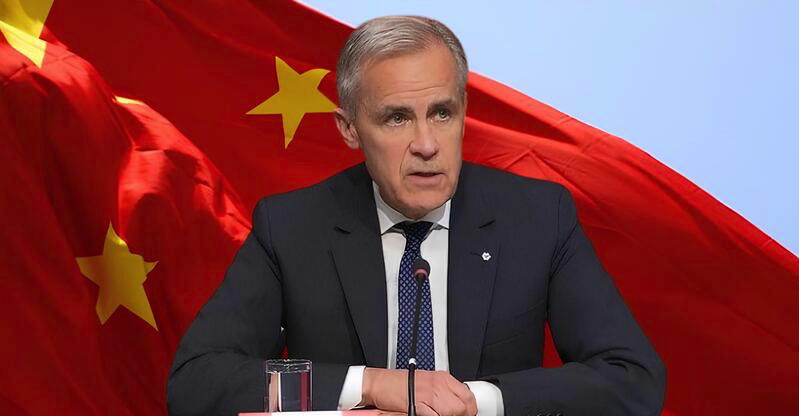Canada’s First Ministers’ recent joint declaration advocating trade diversification, and renewed China engagement, represents a strategic miscalculation that fails to address the structural constraints facing middle powers in today’s global economy, not to mention Canada’s Trump challenge.

While seeking to mitigate vulnerability to Trump administration tariffs is a legitimate policy objective, the premise that Canada can meaningfully reduce its economic integration with the United States fundamentally misreads both market realities and comparative advantage.
Policymakers should instead develop a comprehensive economic resilience framework that prioritizes domestic productivity enhancement, sectoral contingency planning, and coordinated responses with like-minded partners while leveraging existing trade agreements for targeted diversification in specific industries where competitive advantage exists.
Canada’s deep economic integration with the United States—characterized by 77% export dependence, $2.5 trillion in bilateral trade, and intricate cross-border supply chains—represents a structural economic reality that policy must work within rather than attempt to fundamentally alter.
Strategic economic planning should therefore focus on three complementary approaches: first, enhancing resilience within this integration through formalized subnational agreements with key U.S. states and industries; second, developing sector-specific contingency frameworks for industries most vulnerable to trade disruption; and third, implementing a tiered diversification strategy that prioritizes high-potential sectors where competitive advantage exists while maintaining the core U.S. relationship.
This approach acknowledges geographic and economic constraints while creating targeted policy space for strategic autonomy.
This reality extends to other middle powers. Japan and South Korea all confront similar challenges of geographic and economic proximity to major powers that create unavoidable dependencies. Japan sends approximately 20% of its exports to the United States and South Korea sends 18.8% of its exports to America. These patterns reflect economic gravity that transcends political preference.
It is crucial to recognize that Trump’s trade policies, erratic as they sometimes appear, represent not a rupture but a continuation of an American economic reorientation that began under President George W. Bush and accelerated through subsequent administrations.
Each presidency has grown increasingly wary of unfettered free trade, recognizing America’s need to rebuild its industrial base to compete with China’s unparalleled ability to scale up production quickly and efficiently. The Biden administration not only maintained Trump’s initial tariffs on Chinese goods and Canadian aluminum and steel but expanded them through the Inflation Reduction Act’s domestic content requirements and additional semiconductor export controls. Trump 2.0 represents not a break from bipartisan consensus but its most aggressive manifestation.
The “middle power prisoner’s dilemma” constraints Canada’s strategic options between U.S. security relationships and economic opportunities elsewhere, particularly with China. Rather than viewing this as an either/or proposition, policy should focus on managing these tensions through formal consultation mechanisms and sectoral approaches.
More fundamentally, Canada’s response to American protectionism must address its lagging productivity (0.5% growth annually versus the OECD average of 1%), regulatory inefficiencies, and investment shortfalls that create the structural vulnerabilities Trump’s policies exploit. Policy priorities should include streamlined approval processes for strategic infrastructure, tax incentives for productivity-enhancing technologies, and coordinated middle power approaches to supply chain resilience that create collective leverage while preserving key security partnerships.
Canada’s economic vulnerability stems primarily from systemic productivity constraints rather than trade concentration with the United States.
Policy priorities should therefore focus on four interconnected domestic reforms: first, implementing a streamlined regulatory framework for strategic sectors with mandatory approval timelines and consolidated oversight; second, establishing a dedicated infrastructure investment fund with public-private partnership models targeting transportation bottlenecks and digital connectivity; third, developing a comprehensive innovation strategy with enhanced R&D tax credits, commercialization support programs, and targeted immigration pathways for high-skill talent; and fourth, modernizing competition policy to reduce market concentration in key sectors.
Without addressing these structural weaknesses, trade diversification initiatives will simply replicate existing competitive disadvantages in alternative markets.
China represents a deeply problematic diversification partner given its demonstrated pattern of economic coercion against Canada, including the arbitrary detention of Canadian citizens during the Meng Wanzhou affair and punitive agricultural sanctions that cost Canadian farmers $2 billion. Beijing’s documented interference in democratic processes and disregard for diplomatic norms creates economic vulnerabilities that exceed those posed by U.S. protectionism, particularly given China’s lack of institutional constraints and rule-of-law frameworks.
Canadian economic strategy should instead focus on collective resilience measures coordinated with like-minded middle powers. Policy priorities should include implementing harmonized investment screening mechanisms for critical infrastructure and technologies; developing joint supply chain resilience initiatives in strategic sectors like pharmaceuticals and semiconductors; establishing formal coordination mechanisms for responding to economic coercion; and creating shared technology development platforms that distribute innovation capabilities across trusted partners.
While geographic and economic realities prevent meaningful reduction of U.S. trade dependence, targeted sectoral diversification through established frameworks, like the Comprehensive and Progressive Agreement for Trans-Pacific Partnership (CPTPP) and the Comprehensive Economic and Trade Agreement (CETA) , offers strategic opportunities based on rules-based commerce rather than political contingency. These frameworks should be complemented by a comprehensive domestic competitiveness agenda addressing productivity challenges through regulatory streamlining, innovation incentives, and strategic infrastructure investment.
The most effective response to U.S. protectionism combines domestic economic renewal with strategic engagement beyond federal channels. Policy should prioritize establishing formalized economic cooperation mechanisms with key U.S. states, developing sector-specific resilience plans for vulnerable industries, and coordinating multilateral approaches with middle powers facing similar structural constraints. Rather than pursuing diversification through problematic partnerships, Canada should leverage its institutional, business, and social connections with the United States while strengthening domestic economic fundamentals.
For middle powers navigating great power competition, economic geography cannot be overcome through diversification alone. Strategic resilience requires enhancing domestic productivity, developing targeted contingency mechanisms, and building collective leverage through multilateral coordination—not simply pivoting between competing dependencies.
Author: Dr. Stephen R. Nagy – Professor of Politics and International Studies at the International Christian University, specializing in Indo-Pacific geopolitics and great power competition, serving as a Visiting Fellow for the Hungarian Institute for International Affairs(HIIA), June 13th -August 30th, 2025.
(The views expressed in this article belong only to the author and do not necessarily reflect the editorial policy or views of World Geostrategic Insights).







